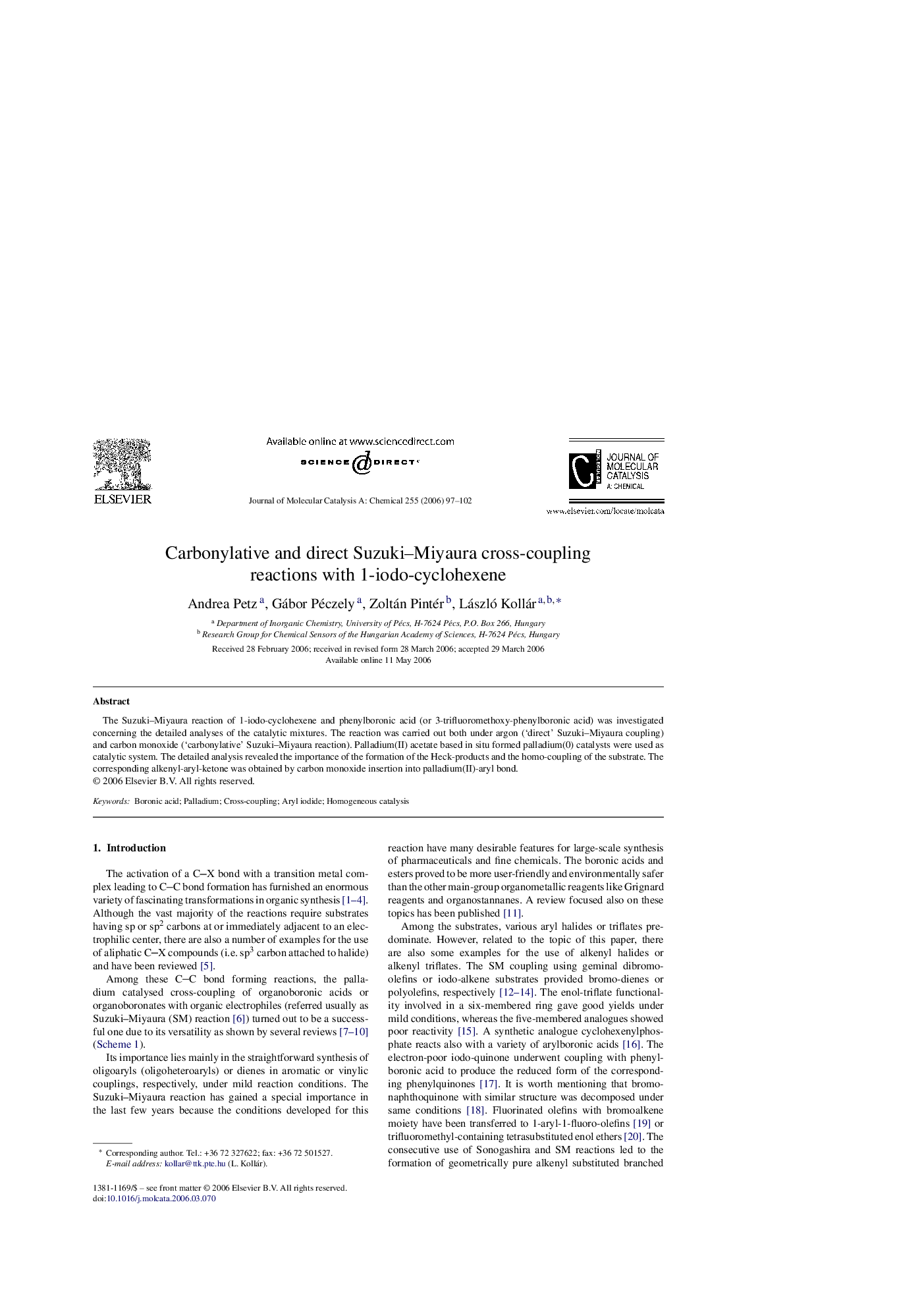| Article ID | Journal | Published Year | Pages | File Type |
|---|---|---|---|---|
| 68557 | Journal of Molecular Catalysis A: Chemical | 2006 | 6 Pages |
The Suzuki–Miyaura reaction of 1-iodo-cyclohexene and phenylboronic acid (or 3-trifluoromethoxy-phenylboronic acid) was investigated concerning the detailed analyses of the catalytic mixtures. The reaction was carried out both under argon (‘direct’ Suzuki–Miyaura coupling) and carbon monoxide (‘carbonylative’ Suzuki–Miyaura reaction). Palladium(II) acetate based in situ formed palladium(0) catalysts were used as catalytic system. The detailed analysis revealed the importance of the formation of the Heck-products and the homo-coupling of the substrate. The corresponding alkenyl-aryl-ketone was obtained by carbon monoxide insertion into palladium(II)-aryl bond.
Graphical abstractThe Suzuki–Miyaura reaction of 1-iodo-cyclohexene and phenylboronic acid (or 3-trifluoromethoxy-phenylboronic acid) was carried out both under argon (‘direct’ Suzuki–Miyaura coupling) and carbon monoxide (‘carbonylative’ Suzuki–Miyaura coupling). Figure optionsDownload full-size imageDownload as PowerPoint slide
